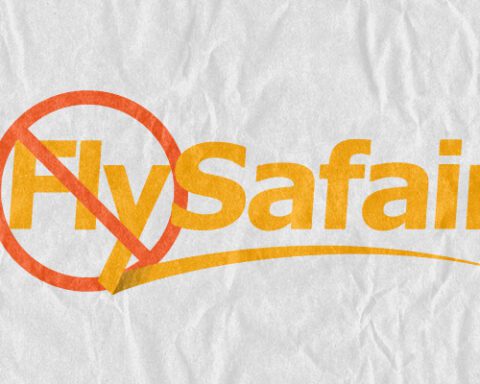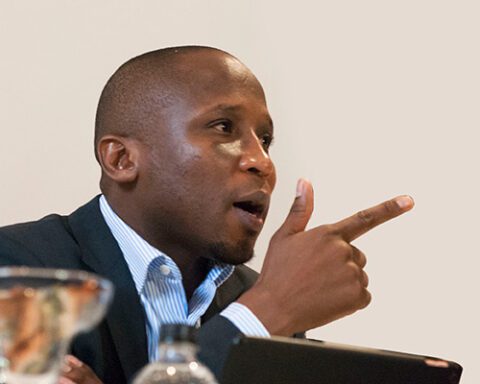Air crashes are very seldom the consequence of a single factor, but of a chain of small events that successfully penetrate the screens of the airline industry’s rigorous safety management systems.
While it’s too early to assign blame, it is common cause that the recent Potomac airline disaster in the US – in which a Black Hawk helicopter collided with a passenger plane – was a combination of air traffic control staff shortages and pressure from the military on civilian airspace. Insert a helicopter crew under training, probably wearing night vision goggles, into this mix, and sooner or later disaster happens.
Airline safety management systems (SMS) are often compared to a Swiss cheese (the James Reason model). The screens of the SMS that filter out risk are like slices of cheese and the trick is to keep the holes in the cheese small enough that they do not line up. It’s when the holes line up that a chain of events can penetrate the system – and people die.
In South Africa the holes in the Swiss cheese are getting bigger – and they are aligning.
The root cause is the failure of the three key state-owned enterprises (SOEs) to do their jobs. These are: Air Traffic Navigation Services (ATNS), which is responsible for air traffic control; the South African Weather Service (SAWS), responsible for weather forecasting at destination airports; and the Airports Company of South Africa (Acsa), responsible for airport services such as a reliable supply of fuel.
All three of these SOEs are failing to deliver services essential to airline safety. Yet, other than an all but unremarked outburst from lobby group the Airlines Association of Southern Africa, the airline industry has been remarkably quiet about the increased dangers passengers are unwittingly accepting.
The key culprit is ATNS and its failure to survey 327 of its procedures which have now been suspended by the Civil Aviation Authority. These procedures were created to make it safer for airlines to operate into and out of airports in bad weather. It follows that the withdrawal of these procedures makes airline travel more dangerous.
There are frightening videos filmed by passengers of airliners “scud running” to land at coastal airports in bad weather.
A chain of failure
Why is this happening? Here’s a scenario where the chain begins at OR Tambo Airport. Because Acsa has still failed to provide the promised backup, there has been a fuel supply crisis. Consequently, airliners are taking off with the minimal legal fuel. The destination is George Airport, however, the pilots have not been able to obtain a weather forecast for George. This is because the SAWS computer was hacked and has been down for more than two weeks and, again – as with OR Tambo’s fuel supply – there was inadequate investment in a backup.
The airline has a schedule to keep to, and on-time performance targets to meet, so the flight takes off. Without a forecast for George it relies on ground weather observations. But these are not forecasts and when the flight arrives at George the weather has deteriorated.
The only way the plane is going to be able to descend through the cloud and land is to use the one instrument landing procedure that is approved. Trouble is – it’s for the wrong end of the runway. What the crew does is fly a “circle to land approach”. This is a procedure that entails descending through the cloud and then “scud-running” beneath the cloud to line up and land on the other end of the runway. If the pilots are strictly following the letter of the law by maintaining the legal minimum altitude above the ground, this may be okay. But it is far from being as safe as an instrument landing procedure.
The weather, and in particular the cloud base, is never a clear-cut thing. There may be globs of cloud about, and the airliner may be darting in and out of the patches of cloud. This is how airliners fly into mountains. And that always ends badly, especially at George. Remember Hansie Cronje.
This massive increase in risk has arisen because, while the airline industry requires the highest standards, it is reliant upon badly managed and failing SOEs. In the three SOEs, the ugly twins of cronyism and cadre deployment have created a toxic culture, where the best people have departed for greener (or sandier) pastures. Nor does there seem to be accountability for poor performance.
Take ATNS. Its CEO, Nozipho Portia Mdawe, was the COO and acting CEO at Transnet National Ports Authority. Under her watch Transnet Ports went from tolerable to being rated worst in the world.
And what did government do? After she had broken the ports, she was given something new to break: ATNS. Only this time the risk is not just of fish and flowers rotting on the dockside, but planeloads of people smeared across mountains.
What has been government’s response? Transport minister Barbara Creecy formed a committee to find out what had happened.
And now – as though there’s nothing more at stake than rotting flowers – ATNS has been given three years to try entice critical skills to return to work under the same CEO and in the same toxic culture they left. Some will return as consultants at exorbitant cost – but as with Eskom and Transnet (which is now asking for a R50bn bailout), fixing this level of incompetence costs huge money.
Meanwhile the airlines continue to fly without the landing and take-off procedures they need to be properly safe. We, the travelling public, who entrust our lives to safety we have come to take for granted, cannot wait three years.
The holes in the cheese are lining up. The lessons of the airline industry are written in blood. South Africa’s Potomac is loading.
Sign up to Currency’s weekly newsletters to receive your own bulletin of weekday news and weekend treats. Register here.









